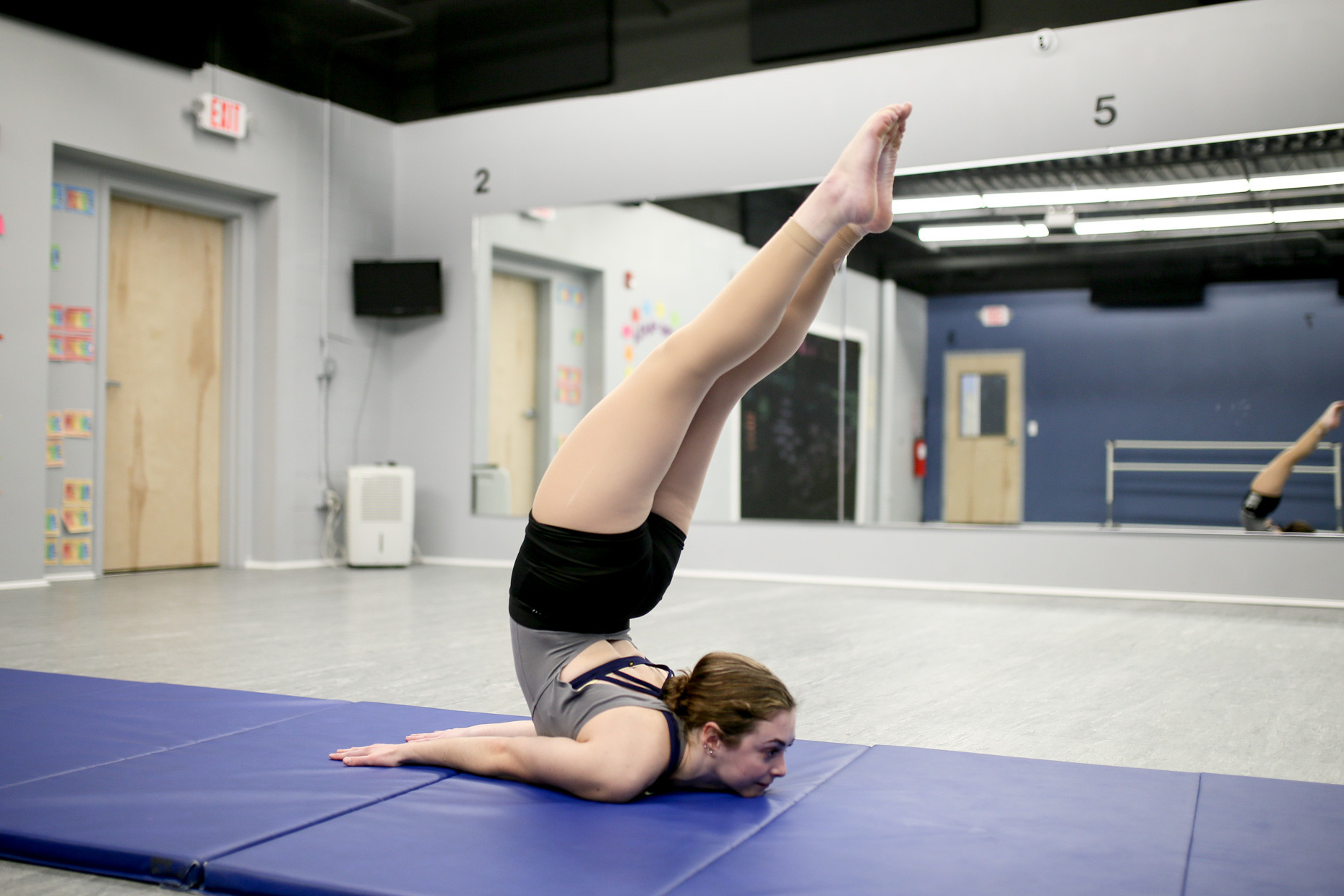Acro dance, often shortened to “acro,” is a dynamic and expressive performance style that beautifully marries the artistry of dance with the athleticism of acrobatics. It’s a genre that captivates audiences with its blend of fluid movement, strength, and daring tricks. But what exactly defines acro dance, and what makes it so unique?
Defining Acro Dance: More Than Just Tricks
At its core, acro dance is not simply gymnastics performed to music. It’s a specialized style of dance that integrates acrobatic elements in a seamless and artistic way. Think of it as dance amplified by the incorporation of gymnastic-based movements. Acro dancers cultivate exceptional flexibility, strength, balance, and coordination to execute these stunning feats. Classes often include targeted conditioning exercises designed to prepare dancers for increasingly complex acrobatic skills.
 Acro dance class in action showcasing flexibility and balance, highlighting the blend of dance and acrobatic skills.
Acro dance class in action showcasing flexibility and balance, highlighting the blend of dance and acrobatic skills.
According to Acrobatic Arts, a leading syllabus in the field, acro dance is “the beautiful fusion of classic dance technique and the precision and athleticism of acrobatic elements.” This definition highlights the crucial balance between dance and acrobatics. It’s not just about performing tricks; it’s about weaving them into a dance context with musicality, emotional expression, and graceful lines.
The History and Evolution of Acro Dance
Acro dance has a rich history, tracing its roots back to traditional Chinese dance forms. It later gained popularity on the Vaudeville stage, where performers wowed audiences with acrobatic displays. In more recent times, acro dance has experienced a surge in mainstream recognition, largely thanks to the breathtaking contemporary circus productions of Cirque du Soleil. Popular dance television shows like ‘So You Think You Can Dance’ and ‘Dance Moms’ have further propelled acro into the spotlight, increasing its appeal in dance studios and competitive circuits worldwide.
Benefits of Acro Dance Training
Training in acro dance offers a multitude of benefits. Physically, it dramatically improves strength, flexibility, and balance. Dancers develop exceptional body control and coordination. Technically, acro training enhances dance skills by encouraging precision, discipline, and spatial awareness. Moreover, a structured syllabus like Acrobatic Arts prioritizes safe progression, leading to fewer accidents and minimizing the risk of chronic injuries. Beyond the physical and technical advantages, acro dance cultivates fearlessness and builds confidence, empowering dancers to push their boundaries and achieve remarkable feats.
What to Expect in an Acro Dance Class
An acro dance class typically begins with conditioning exercises to build the necessary strength and flexibility. Students learn foundational skills like forward rolls and cartwheels, gradually progressing to more advanced tumbling, balances, and partner work as their skill level increases. The emphasis is on safe and effective progressions, ensuring dancers develop a solid technical base while minimizing the risk of injury. Whether you are a beginner or an experienced dancer, acro dance offers a challenging and rewarding path to explore the exciting intersection of dance and acrobatics.

